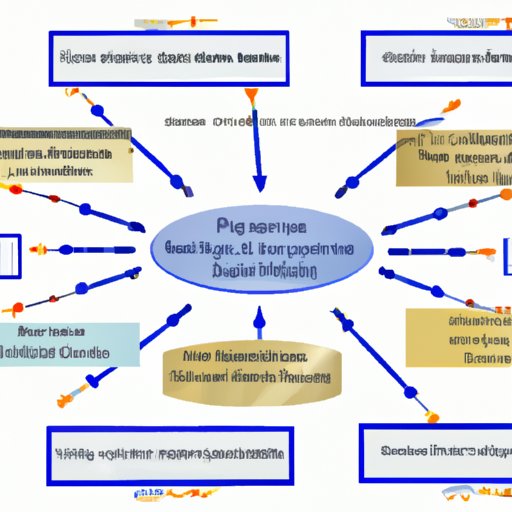Introduction
DNA evidence analysis has become increasingly important in criminal investigations as a way of identifying perpetrators and exonerating innocent suspects. DNA evidence can provide reliable results when properly collected and interpreted, but it is not without its flaws. This article will explore why DNA evidence analysis is an imperfect science and the challenges that come with collecting and interpreting this type of evidence.

Definition of DNA Evidence Analysis
DNA evidence analysis involves the examination of genetic material to identify a particular individual or group of individuals. It is used by law enforcement and other forensic professionals to identify suspects in criminal cases, as well as victims in mass disasters. DNA evidence can be obtained from blood, saliva, semen, hair, and other biological materials left at crime scenes. DNA evidence analysis can also be used to determine paternity and other familial relationships.

Overview of the Imperfections of DNA Evidence Analysis
Despite its usefulness in criminal investigations, DNA evidence analysis is far from perfect. For starters, the accuracy and reliability of the results can be compromised if the sample is not properly collected or stored. Additionally, there are potential sources of error that can lead to misidentification or misinterpretation of the evidence.
Limitations of DNA Evidence Analysis
Accuracy and reliability are two of the most important factors to consider when evaluating DNA evidence analysis. If the sample is not properly collected or stored, the results may be skewed or unreliable. Furthermore, human error can also play a role in the accuracy and reliability of the results. For example, mistakes in data entry or laboratory testing can lead to incorrect results.
Potential Sources of Error
In addition to the risk of human error, there are several other potential sources of error that can affect the accuracy and reliability of DNA evidence analysis. These include contamination of the sample, errors in statistical interpretation of the data, and misinterpretation of the results due to bias or inexperience. All of these factors can lead to inaccurate or unreliable results.
Challenges of Collecting and Interpreting DNA Evidence
Collecting and interpreting DNA evidence can be a difficult and time-consuming process. One of the biggest challenges is avoiding contamination of the sample. Contamination can occur if the sample is mishandled or exposed to other sources of genetic material, such as skin cells or hair follicles. Contamination can lead to false positives or false negatives, which can have serious implications for any investigation.
Another challenge is the interpretation of the data. DNA evidence analysis relies heavily on statistics, and even small mistakes in the interpretation of the data can lead to inaccurate results. Inexperienced analysts may misinterpret the results due to their lack of knowledge or experience.
Familial Searching in DNA Evidence Analysis
Familial searching is a technique used in DNA evidence analysis to identify close relatives of a suspect. It involves comparing the suspect’s DNA profile to those of other individuals in a database. This can help narrow down the list of suspects and potentially identify the perpetrator. However, familial searching has raised ethical and privacy concerns, as well as questions about its accuracy and reliability.

Issues with Using Familial Searching
The use of familial searching in DNA evidence analysis has been criticized for a number of reasons. For one, it has been argued that it violates the privacy rights of individuals who are not directly involved in the investigation. Additionally, there is no guarantee that the results will be accurate or reliable. Finally, familial searching can lead to false positives, which can have serious implications for any investigation.
Conclusion
DNA evidence analysis is an invaluable tool in criminal investigations, but it is far from perfect. This article has explored the imperfections of DNA evidence analysis, including its limitations in terms of accuracy and reliability, potential sources of error, risks of contamination, and implications of false positives or negatives. Additionally, it has examined the issues with using familial searching in DNA evidence analysis. To ensure accuracy and reliability, it is important for law enforcement and other forensic professionals to understand the limitations of DNA evidence analysis and take steps to minimize the potential for error.
Summary of Main Points
This article has discussed the imperfections of DNA evidence analysis, including its limitations in terms of accuracy and reliability, potential sources of error, risks of contamination, and implications of false positives or negatives. Additionally, it has examined the issues with using familial searching in DNA evidence analysis.

Recommendations for Improving DNA Evidence Analysis
To ensure accuracy and reliability, it is important for law enforcement and other forensic professionals to take steps to minimize the potential for error. This includes proper collection and storage of samples, minimizing potential sources of contamination, and using experienced analysts to interpret the data. Additionally, care should be taken when using familial searching to avoid violating the privacy rights of individuals who are not directly involved in the investigation.
(Note: Is this article not meeting your expectations? Do you have knowledge or insights to share? Unlock new opportunities and expand your reach by joining our authors team. Click Registration to join us and share your expertise with our readers.)
